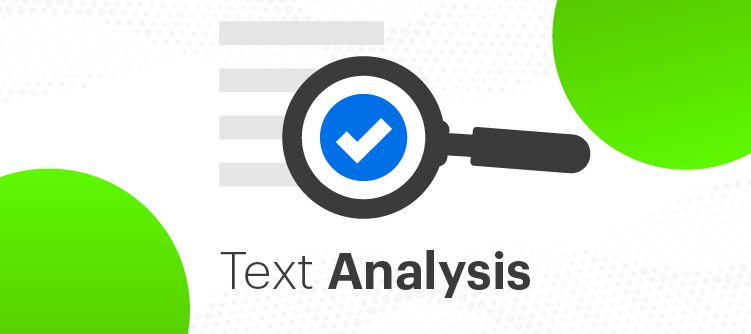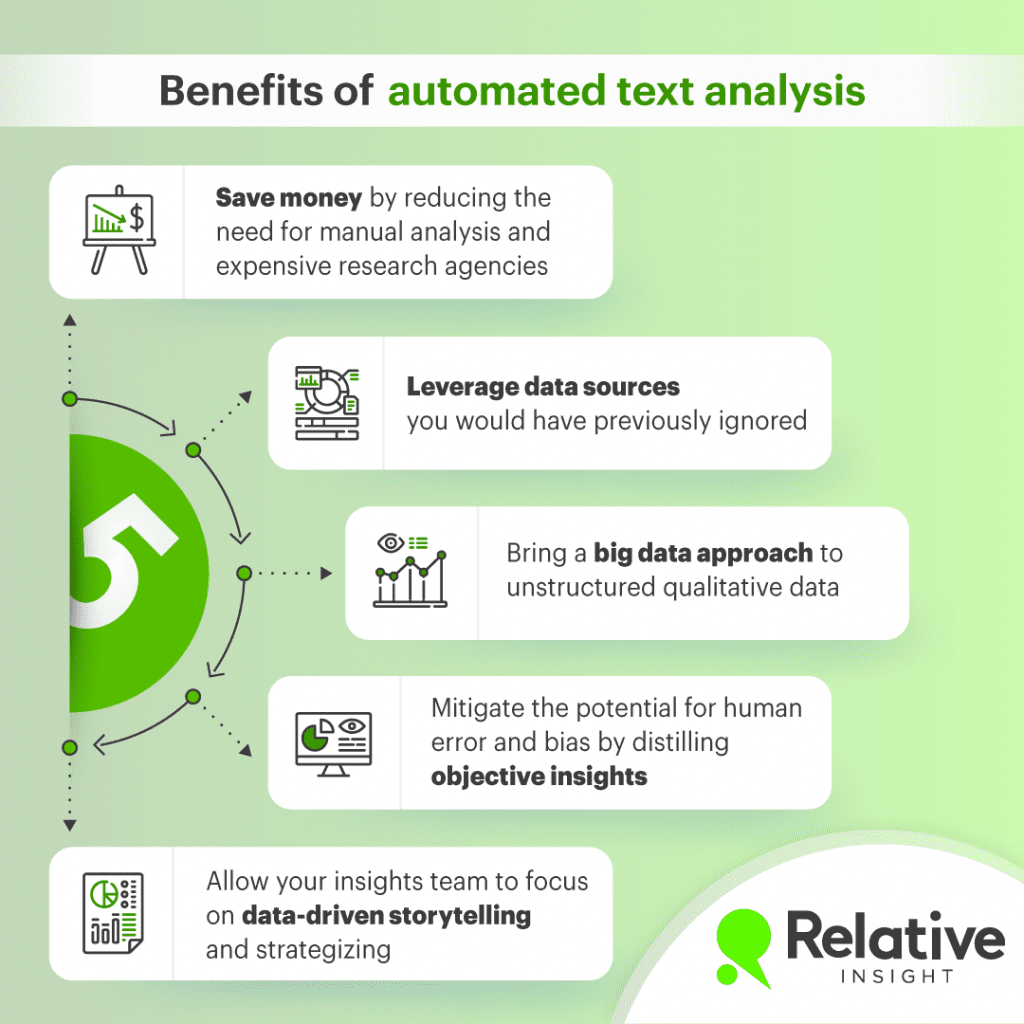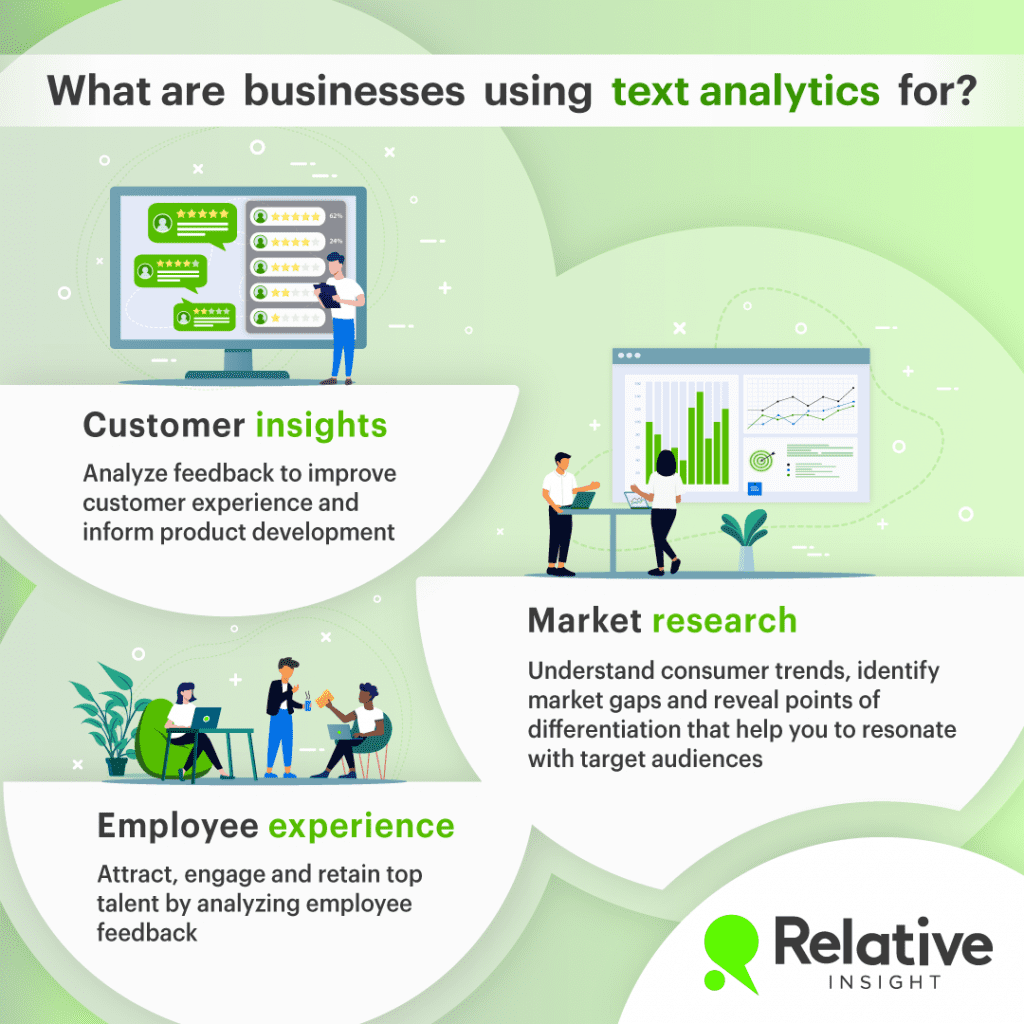What is text analysis?

Are you tapping the full potential of your text data by using text analysis?
The amount of qualitative data being generated on a daily basis is growing exponentially. Every day, around 1.145 trillion MB of data is created across the globe. It’s estimated that up to 90% of this data is unstructured.
Unstructured data can include text, videos, images, social media posts, audio and emails. These types of data can reveal people’s thoughts, feelings, frustrations and desires in ways that quantitative analysis can’t.
However, analyzing text data can be challenging.
Why? Because generating market research, customer and employee insights from text data can be costly, slow and labor intensive.
The market for advanced text analytics solutions is still young, and many organizations continue to do this work manually.
This ultimate guide around the question “What is text analysis?”, gives you an overview of the key things to know about text analysis and why it’s an essential part of any business’s intelligence function, addressing the following topics:
Text analysis definition: What is text analysis?
Text analysis refers to the process of converting unstructured text into meaningful data.
Text analytics transforms text into a more structured format that helps users understand the important elements of a written data set.
This almost always involves an element of natural language processing (NLP). However, within NLP there are many different approaches that can be used, some of which are more advanced than others.
Text mining vs text analytics
Now that you know how to answer the question “What is text analysis?”, you’re probably wondering, if it’s the same as text mining.
Text mining is often used interchangeably with text analytics. However, there is a subtle difference.
Text mining pulls out information such as linguistic features that are present within a text data set, through computational analysis.
On the other hand, text analytics focuses on turning text analysis into visualizations, quantifiable metrics and other formats that are business relevant.
For businesses, text analytics could be used to analyze voice of the customer feedback such as review data, social media posts or evaluating open-end survey responses in order to find recurring themes, trends and patterns.
Not only does this save hours of manual analysis and erase the degree of human error, but the discovered insights can then be used as a means of business intelligence to inform strategic decision-making.
What is text analysis: the benefits of text analytics
In today’s world, businesses are focused on developing better understanding of their customers, competitors and employees.
Having the capability to analyze large volumes of text data is foundational to cultivating this deeper level of understanding.
Text analytics can show how people are feeling, whether they like your brand or product, the topics that are trending amongst a target demographic and precisely what is being talked about.

The top benefits of text analytics include:
Save money, time and resources
Text analytics tools easily discover recurring themes, topics, trends and emotions within a text, using a wide array of approaches. This can range from basic rule-based methods to more sophisticated models which utilize AI to improve the accuracy of text classifications.
Market researchers and insights professionals are then able to understand key themes amongst consumers, competitors and the wider industry.
By automating your text analysis you reduce the need for manual analysis and expensive research agencies, saving valuable time, money and resources.
Bring a big data approach to unstructured qualitative data
Text analytics is an invaluable tool for cutting through the noise and finding interesting nuggets of information in large piles of unstructured text. It enables you to analyze qualitative information without having to read every single word.
By providing a quick and efficient solution for analyzing unstructured text at scale, you’ll be able to analyze data from survey open-ends, social conversations, customer service transcripts and online reviews that may have previously been ignored for lack of a scalable solution.
Distill objective insights
Beyond being time-intensive and costly, manual analysis is inherently subjective and injects the bias of the humans doing the work into your insights.
Relying on text analysis software for your qualitative analysis will enable you to mitigate the potential for human error and bias by distilling objective insights.
Quantify your qualitative data
AI text analytics tools like Relative Insight will allow you to quantify your qualitative data, by putting metrics around what your employees, customers and target audiences are saying.
Instead of spending hours sifting through masses of text data, your insights team can then focus on using these metrics for data-driven storytelling and strategizing that will resonate with stakeholders.
Turn mountains of data into metrics within minutes
Text analysis use cases

Leading brands, charities and agencies are using text analysis to make sense of their unstructured text data:
Analyze customer feedback to improve customer experience
Understand what your customers are saying about your brand, by analyzing customer feedback data such as survey open-ends, review data, and social media posts.
One common text analytics use cases for customer insights is analyzing feedback from online reviews to pinpoint patterns and trends relating to customer satisfaction or dissatisfaction.
Leverage text analysis software for market research by understanding consumer trends
Analyze the language around a given topic or brand, tracking how themes change over time or comparing how opinions differ across different demographics.
This will enable you to understand consumer trends, identify market gaps and reveal points of differentiation that help you resonate with target audiences.
Attract and retain top talent by analyzing employee feedback
Analyzing company reviews and employee surveys helps employers reveal the drivers of employee performance, satisfaction and retention while identifying potential areas of improvement.
Analyzing text data with AI text analytics software
Relative Insight’s text analytics platform compares two or more written data sets to unearth the differences, frequencies and similarities in how audiences, brands and organizations speak.
By combining natural language processing and comparative linguistics, Relative Insight is able to ‘read’ a text and highlight the topics, words, phrases, grammar and emotions that are present. However, it doesn’t stop there.
Our distinct comparative approach to text analytics enables organizations to understand what makes a text unique, as it’s the differences in text that are truly insightful and relevant.
In taking a comparative approach to text analytics, Relative Insight incorporates context into the analysis process in ways that other text analysis techniques do not, isolating what is different or unique about one text in comparison to another.
Knowing the differences in language across demographics, time periods or competitors means that businesses can gain better intel into customer behaviors, how consumer trends change over time, or how brand voice compares to the competition.
